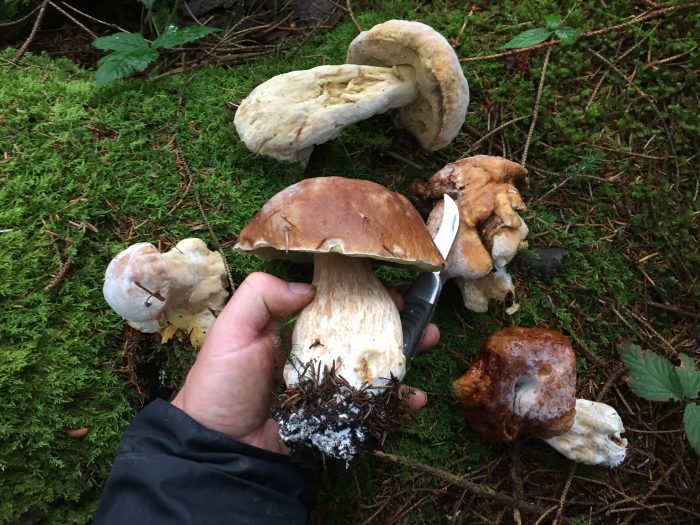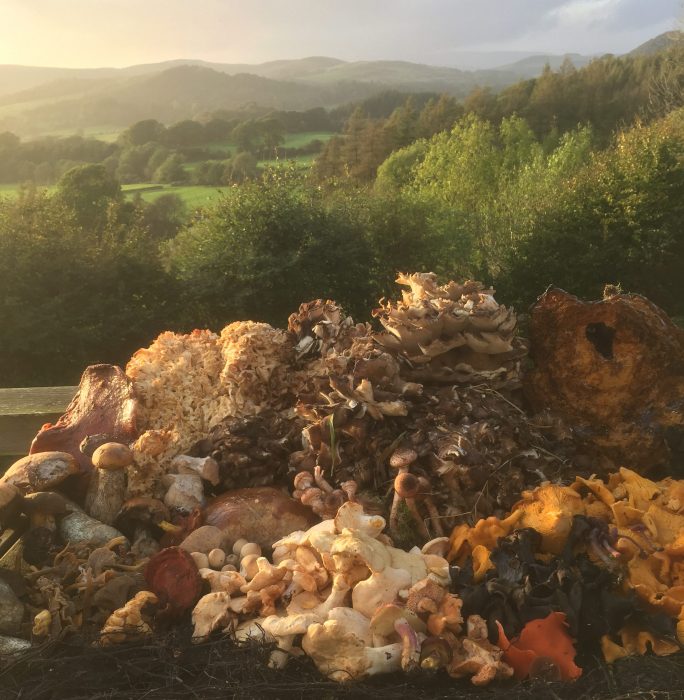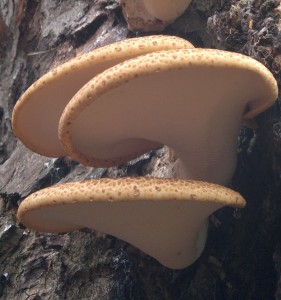Mushrumami – How to Make Umami Seasoning From Wild Mushrooms
If you are new to fungi foraging and follow a lot of foraging social media accounts, you could easily form the impression that there is some magical point in people’s foraging journey when they suddenly start to only find pristine wild mushrooms, and lots of them too….and just happening to fall artfully into a pretty basket!
The truth behind these images is that for every bumper basket there is a fruitless hike, and for every picture-perfect mushroom there are 20 piles of maggoty fungal mush! Its a shame that more images of these don’t get shared, as I think the “idealised basket shot” can give the wrong idea about foraging.
Given the fleeting window of perfection for most (but not all) edible wild mushrooms, its likely that the majority of any forager’s harvest, no matter how skilled or experienced, will be before, or more likely, past, their prime, and left, like Mozart, to get get on with de-composing.

1 useable cep (in hand) to every 20 or so ceps destroyed by bolete eater fungi (in background) is about the norm in soggy W Scotland
Have a read about all the things that feast on and decompose ceps to understand a bit more about this.
But some of these past-their-prime specimens, as well as several less sought after species, can be used to make a tasty, flavour-enhancing condiment that I have christened mushrumami. Umami is that elusive 5th taste sensation (discovered in the west long after sweet, salt, sour and bitter), that makes us salivate, gets our gastric juices flowing, and adds richness and bass-notes to anything it accompanies. Umami comes from glutamates, which are naturally present in many things – notably breast milk – small wonder it makes for great comfort food!
Glutamates are often added to enhance the flavour of processed foods, thereby saving money on other flavourings, and adding a more-ish addictive quality. These chemicals are seldom good news for your health in processed foods. So why am I banging on about them here..?
Because they aren’t all made in a lab. They occur naturally, and wholesomely, in meat, fish, smoked products, ferments, seaweeds, shellfish, and of most interest here, fungi.
This preparation is dead simple and can be applied to most edible species, but is best kept for those past-their-prime and less esteemed specimens that most forays encounter. Some species make tastier mushrumami than others, but i’ve never found an edible species that didn’t make a decent one. I’ve made my most rewarding mushrumami from oyster mushrooms, ceps and hen of the woods, but its possibly more satisfying to make it from species that aren’t much use in other ways, such as dryad’s saddle or lesser boletes.
If you are using past their prime mushrooms, you may well need to make your own call on what an acceptable level of insect larvae is! For many, this is zero, but I know plenty of folk who are pretty relaxed about a bit of extra protein. With this technique, you won’t actually be eating any larvae (assuming you sieve is reasonable fine), but you may get some of their juices!
For reasons that should be obvious, don’t use dried out (naturally or deliberately) mushrooms.
This is an umami-heavy seasoning that can be used a little like soy sauce, for seasoning meat, fish or mushroom dishes, as a part of a marinade, in salad dressings, or to add delicious salty-savoury umami to cocktails. Try it in a filthy dirty forager’s martini! You could also use it instead of salt to set off fermentations.
- Roughly shred your middle aged (ie. not all dried out) mushrooms
- Weigh, then massage it with 5% of its weight in sea salt
- Place in a sieve or colander over a bowl
- Place a weighted plate on top
- Leave at ambient temperature for 24 hours
- Collect the mushrumami juices that have run out (squeeze out the mushrooms, your call whether they are good for anything else after this process!)
- You may wish at this stage to do a finer strain (eg. through a coffee filter)
- If the mushroom you used falls in the category of “should be cooked before eating”, it is wise to next place the liquid in a pan and bring it to a boil. It can also be reduced down at this stage to make it more intense if required
- Store in bottles as clean/sterilised as your faff-to-hygeine tolerance ratio tells you
- Keeps in the fridge for up to a month, or can be frozen
- Add more salt to increase its keeping qualities
Related Pages:




2 Comments
What a lovely way to use middle aged mushrooms! In the states, Trader Joe’s offers a Umami spice powder that includes dried mushrooms and salt.
Thanks for the tips! Never thought about umami as a liquid.. only as a powder. Can’t wait to try!!